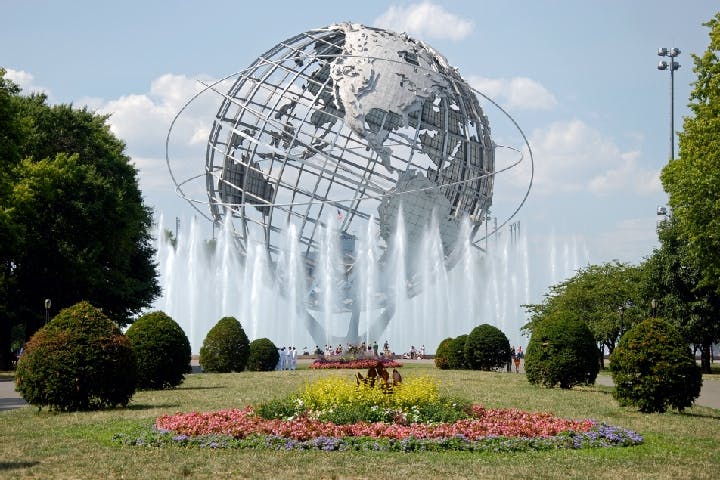Winter 2008
The Melting Pot of Queens
– Mimi Schwartz
Mimi Schwartz reviews a new guide to Queens, the largest of the city’s five boroughs and the second most populous (after Brooklyn). The book's author calls it “the most heterogeneous place in the world.”
New York City, for many, means the borough of Manhattan, with its skyscrapers, Fifth Avenue shops, Central Park, and Wall Street. But just to the east is a lesser-known gem: Queens. The largest of the city’s five boroughs (110 square miles) and the second most populous (after Brooklyn), Queens is unique. It is, as historian Kenneth T. Jackson points out in his introduction to The Neighborhoods of Queens, “the most heterogeneous place in the world.” Of its two million residents, 44 percent are foreign born—a population that tops Miami’s. One Queens neighborhood, Elmhurst, has immigrants from 110 countries. Another, Astoria, “has the largest Greek population outside the Mediterranean.” Richmond Hill is home to the largest population of Sikhs outside India. And on it goes.
The Neighborhoods of Queens—written by Claudia Gryvatz Copquin, a freelance journalist raised on the turf—is a practical, easy-to-use guide to every one of the 99 neighborhoods and smaller yet distinct sub-neighborhoods of this fascinating, multicultural borough. Each chapter offers a brief narrative overview of the area it covers and is generously illustrated with photographs and a detailed map. Before Yale launched its “Neighborhoods of New York City” series (in collaboration with the Citizens Committee for New York City), to which this book is the latest addition, no one had attempted to map all the city’s neighborhoods.
My family arrived in the borough as refugees from Nazi Germany in 1937, three years before I was born. I grew up in Forest Hills, and when I opened to the chapter on that neighborhood, there was a photo of the West Side Tennis Club, where we used to watch the U.S. Open before it moved to Flushing Meadows in 1978. Other pictures captured the mix of apartment houses and neat single-family houses—five or six to a block—that I used to pass every day as a child. Across the dozen or so lanes of Queens Boulevard is the more exclusive Forest Hills Gardens, the nation’s first planned community, designed by Frederick Law Olmsted Jr. and Grosvenor Atterbury in the early 1900s to look like a quaint English village. Jews and Catholics were not welcome there in my day, but when I walked in this neighborhood a few years ago, signs on telephone poles and lawns indicated the presence of a thriving Asian community.
Aside from its rich diversity, what makes Queens special is a tradition of tolerance that began more than a century before the Declaration of Independence. When the Dutch controlled the area in the 1600s, citizens revolted against Governor Peter Stuyvesant’s efforts to limit how they worshiped, producing the Flushing Remonstrance of 1657. This petition, Jackson writes, “remains the most eloquent defense of religious freedom in all of American history.” One man, John Bowne, went to jail rather than submit to a law that forbade Quakers from worshiping in his house. He appealed, and the Dutch government overruled Stuyvesant. It all happened in Flushing, Queens, in what is now the heart of a thriving Chinatown. Bowne’s house, the oldest structure in the borough, has been converted to a museum on the street named after him.
Queens still attracts people looking for opportunity and peace. Despite its latest influx of diverse newcomers—from China, Guyana, the Dominican Republic, Colombia, Jamaica, South Korea, India, Haiti, and Ecuador—this borough of New York has fewer homicides than many American cities with smaller populations, including Atlanta and Baltimore. We should all go to Queens to see how it’s done.
* * *
Reviewed: The Neighborhoods of Queens. By Claudia Gryvatz Copquin. Yale Univ. Press. 265 pp.
Photo courtesy of Wikimedia Commons
